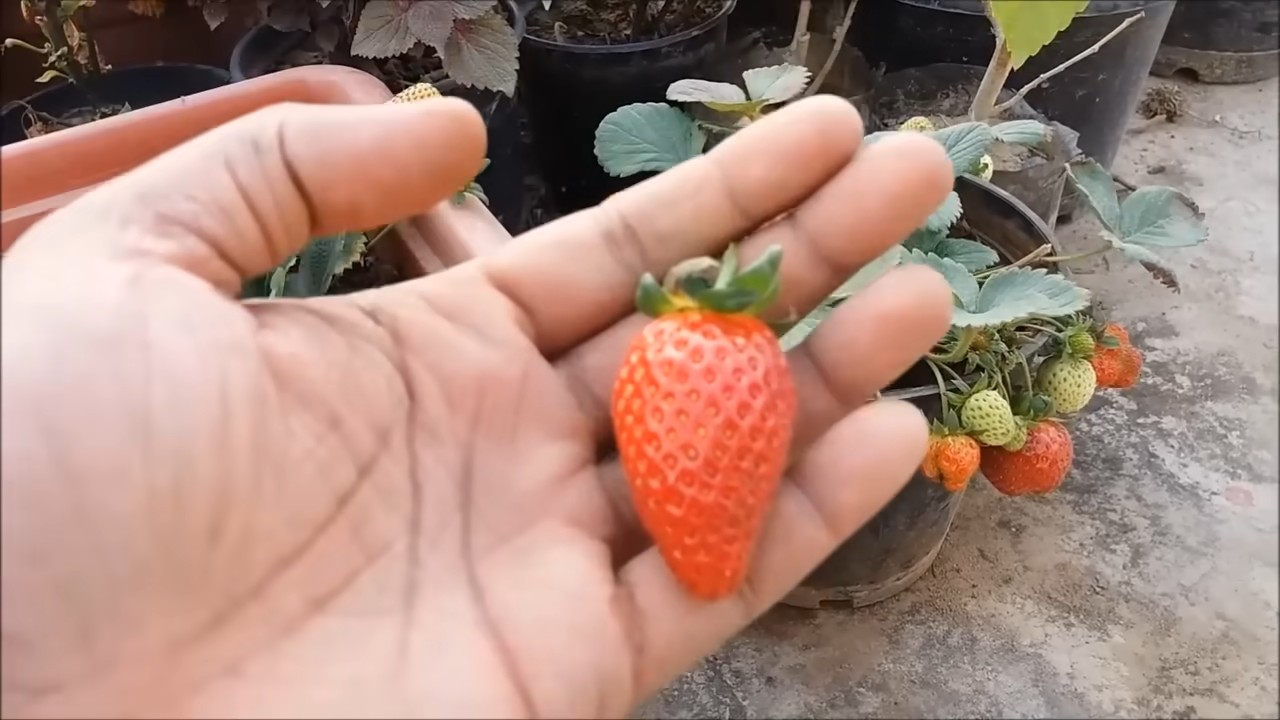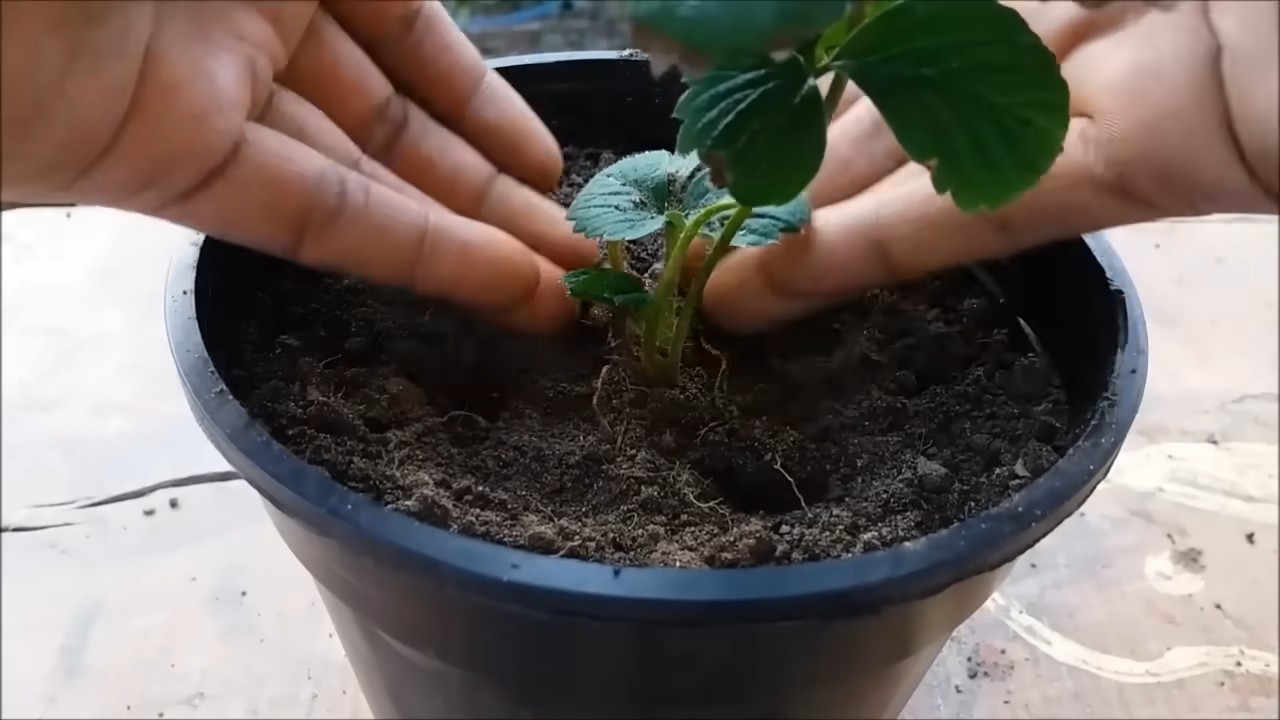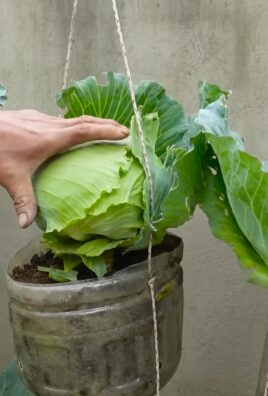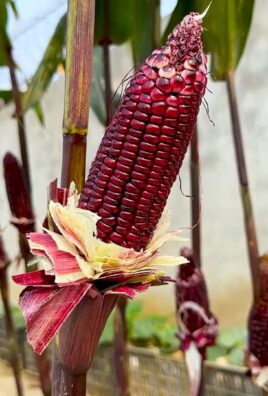Grow Strawberries at Home – imagine plucking juicy, sun-ripened strawberries straight from your own garden! It’s a dream many of us share, and it’s more achievable than you might think. For centuries, strawberries have been cherished, not just for their delicious taste, but also for their vibrant color and the joy they bring. From ancient Roman gardens to modern-day balconies, these little red gems have always held a special place in our hearts and diets.
But let’s be honest, buying strawberries from the store can be a gamble. Sometimes they’re bland, sometimes they’re bruised, and sometimes they just don’t have that fresh-picked flavor we crave. That’s where the magic of DIY comes in! I’m here to show you some simple, effective tricks and hacks to grow strawberries at home, even if you have limited space or gardening experience.
This article is packed with easy-to-follow tips that will help you cultivate a thriving strawberry patch, right in your own backyard (or balcony!). We’ll cover everything from choosing the right varieties to dealing with common pests, ensuring you’ll be enjoying a bountiful harvest of sweet, delicious strawberries in no time. Get ready to roll up your sleeves and discover the joy of homegrown goodness!

Grow Your Own Delicious Strawberries: A DIY Guide
Hey there, fellow gardening enthusiasts! I’m so excited to share my tried-and-true method for growing juicy, delicious strawberries right at home. Forget those bland, store-bought berries – nothing beats the taste of homegrown goodness. This guide will walk you through everything you need to know, from choosing the right variety to harvesting your sweet rewards. Let’s get started!
Choosing the Right Strawberry Variety
Before we dive into the nitty-gritty, it’s crucial to pick the right strawberry variety for your climate and preferences. There are three main types:
* **June-Bearing:** These produce one large crop of strawberries, typically in late spring or early summer (hence the name!). They’re great if you want a big batch for jam-making or freezing.
* **Everbearing:** These produce two or three harvests throughout the growing season – one in spring, one in late summer/early fall, and sometimes a smaller crop in between. They’re perfect for a continuous supply of berries.
* **Day-Neutral:** These are the most consistent producers, yielding strawberries throughout the entire growing season as long as temperatures are moderate. They’re a fantastic choice if you want a steady stream of berries all summer long.
Consider your local climate and how much space you have. Some popular and reliable varieties include:
* **June-Bearing:** ‘Honeoye’, ‘Earliglow’, ‘Chandler’ (for warmer climates)
* **Everbearing:** ‘Ozark Beauty’, ‘Seascape’, ‘Albion’
* **Day-Neutral:** ‘Tristar’, ‘Tribute’, ‘San Andreas’
I personally love ‘Ozark Beauty’ for its delicious flavor and everbearing nature.
Preparing Your Strawberry Patch
Strawberries thrive in well-drained, slightly acidic soil (pH 5.5-6.5). Here’s how to get your patch ready:
* **Location, Location, Location:** Choose a spot that gets at least 6-8 hours of direct sunlight per day. Strawberries need plenty of sunshine to produce sweet, flavorful berries.
* **Soil Testing:** I highly recommend testing your soil’s pH. You can buy a soil testing kit at most garden centers or send a sample to your local agricultural extension office.
* **Soil Amendment:** Amend your soil with plenty of organic matter, such as compost, well-rotted manure, or peat moss. This will improve drainage, fertility, and water retention. I usually add a generous layer of compost and work it into the top 6-8 inches of soil.
* **Weed Removal:** Strawberries don’t compete well with weeds, so it’s essential to remove all weeds from your planting area before you begin. You can do this by hand-pulling, using a hoe, or applying a pre-emergent herbicide (follow the instructions carefully!).
* **Raised Beds (Optional):** If your soil is heavy clay or poorly drained, consider planting your strawberries in raised beds. This will improve drainage and prevent root rot.
Planting Your Strawberry Plants
Now for the fun part – planting your strawberry plants!
1. **Soak the Roots:** Before planting, soak the roots of your strawberry plants in water for about 30 minutes. This will help them rehydrate and get off to a good start.
2. **Spacing:** Space your strawberry plants about 12-18 inches apart in rows that are 2-3 feet apart. This will give them enough room to grow and spread.
3. **Planting Depth:** The most important thing is to plant your strawberry plants at the correct depth. The crown (the point where the roots meet the stem) should be level with the soil surface. Planting too deep can cause the crown to rot, while planting too shallow can dry out the roots.
4. **Mounding (Optional):** For June-bearing varieties, you can create a slight mound of soil under the roots to encourage runner production.
5. **Water Thoroughly:** After planting, water your strawberry plants thoroughly to settle the soil and help them establish their roots.
Caring for Your Strawberry Plants
Once your strawberry plants are in the ground, it’s important to provide them with the care they need to thrive.
* **Watering:** Strawberries need consistent moisture, especially during fruit production. Water deeply whenever the top inch of soil feels dry to the touch. Avoid overhead watering, as this can promote fungal diseases. Drip irrigation or soaker hoses are ideal.
* **Fertilizing:** Fertilize your strawberry plants in early spring with a balanced fertilizer (e.g., 10-10-10). Follow the instructions on the fertilizer package carefully. Avoid over-fertilizing, as this can lead to excessive foliage growth and fewer berries. I like to use a slow-release fertilizer for a steady supply of nutrients.
* **Weed Control:** Continue to remove weeds regularly to prevent them from competing with your strawberry plants for nutrients and water. Mulching with straw, wood chips, or black plastic can help suppress weeds.
* **Runner Management:** June-bearing strawberries produce runners (long stems that grow horizontally and develop new plantlets). If you want to maximize fruit production, remove the runners as they appear. This will force the plant to put its energy into producing berries instead of new plants. For everbearing and day-neutral varieties, you can let some runners develop to propagate new plants.
* **Pest and Disease Control:** Keep an eye out for common strawberry pests and diseases, such as slugs, snails, aphids, spider mites, and fungal diseases. Use organic pest control methods whenever possible, such as hand-picking pests, using insecticidal soap, or applying neem oil. Ensure good air circulation around your plants to prevent fungal diseases.
* **Mulching for Winter:** In colder climates, mulch your strawberry plants with a thick layer of straw in late fall to protect them from freezing temperatures. Remove the mulch in early spring when new growth begins.
Protecting Your Strawberries
One of the biggest challenges of growing strawberries is protecting them from birds and other critters. Here are a few tips:
* **Netting:** Cover your strawberry plants with bird netting to prevent birds from eating your berries. Make sure the netting is securely anchored to the ground to prevent birds from getting trapped underneath.
* **Row Covers:** Use row covers to protect your strawberry plants from insects and frost. Row covers are lightweight fabric covers that you can place over your plants.
* **Decoy Berries:** Place red-painted rocks or plastic strawberries around your plants to trick birds into thinking the berries are not ripe.
* **Companion Planting:** Plant herbs like thyme, rosemary, or sage around your strawberries to deter pests.
Harvesting Your Strawberries
The moment you’ve been waiting for – harvesting your delicious strawberries!
1. **Ripeness:** Strawberries are ready to harvest when they are fully red and slightly soft to the touch. They should also detach easily from the stem.
2. **Harvesting Time:** Harvest your strawberries in the morning, after the dew has dried. This is when they will be at their sweetest and most flavorful.
3. **Gentle Handling:** Handle your strawberries gently to avoid bruising them.
4. **Storage:** Store your strawberries in the refrigerator for up to a week. Don’t wash them until you’re ready to eat them, as washing can cause them to spoil more quickly.
Extending the Strawberry Season
Want to enjoy fresh strawberries for even longer? Here are a few tips:
* **Succession Planting:** Plant different varieties of strawberries that ripen at different times. This will extend your harvest season.
* **Cold Frames:** Use cold frames to protect your strawberry plants from frost and extend the growing season in the spring and fall.
* **Greenhouse:** Grow your strawberries in a greenhouse for year-round production.
Troubleshooting Common Strawberry Problems
Even with the best care, you may encounter some problems when growing strawberries. Here are a few common issues and how to address them:
* **Small Berries:** This can be caused by insufficient sunlight, poor soil fertility, or overcrowding. Make sure your strawberry plants are getting enough sunlight, fertilize them regularly, and thin out the plants if they are too crowded.
* **Rotting Berries:** This can be caused by fungal diseases or excessive moisture. Ensure good air circulation around your plants, avoid overhead watering, and apply a fungicide if necessary.
* **Pest Infestations:** Regularly inspect your strawberry plants for pests and take action to control them as soon as you notice them.
* **Lack of Fruit:** This can be caused by insufficient pollination, frost damage, or poor soil fertility. Ensure your strawberry plants are getting enough sunlight, fertilize them regularly, and protect them from frost. You can also hand-pollinate the flowers if necessary.
Propagating New Strawberry Plants
Once you have a thriving strawberry patch, you can easily propagate new plants from runners.
1. **Select Runners:** Choose healthy runners with well-developed roots.
2. **Potting:** Pot the runner plantlets in small pots filled with potting mix.
3. **Watering:** Water the potted plantlets regularly and keep them in a

Conclusion
So, there you have it! Growing strawberries at home, especially using our simple DIY trick, is not just a fun project; it’s a gateway to enjoying the freshest, most flavorful berries imaginable. Forget those bland, store-bought strawberries that have traveled miles and lost their zing. Imagine plucking ruby-red, sun-ripened berries straight from your own garden, bursting with sweetness and packed with vitamins. That’s the promise of this method.
But why is this DIY approach a must-try? It’s about control. You control the soil, the water, and the sunlight, ensuring your strawberries receive the optimal conditions for growth. You avoid harmful pesticides and herbicides, guaranteeing a healthy and organic harvest. Plus, it’s incredibly rewarding to nurture a plant from seedling to fruit, witnessing the miracle of nature unfold right before your eyes. It’s a fantastic way to connect with your food and appreciate the effort that goes into producing it.
Beyond the basic method we’ve outlined, there are plenty of ways to customize your strawberry-growing experience. Consider experimenting with different strawberry varieties. Everbearing strawberries will provide a continuous harvest throughout the growing season, while June-bearing varieties offer a larger, concentrated yield. You could also try vertical gardening techniques to maximize space, especially if you’re working with a small balcony or patio. Think stacked planters, hanging baskets, or even repurposed pallets transformed into living walls.
Another variation involves companion planting. Basil, thyme, and borage are all excellent companions for strawberries, helping to deter pests and improve flavor. Marigolds are also a great choice for keeping nematodes at bay. Don’t be afraid to get creative and explore different combinations to see what works best for your garden.
And speaking of your garden, remember to consider your local climate and growing conditions. Adjust your watering schedule and sun exposure accordingly. If you live in a colder region, you may need to protect your strawberry plants during the winter months with a layer of mulch or a cold frame.
Ultimately, the best way to learn is by doing. So, we wholeheartedly encourage you to give this DIY strawberry-growing trick a try. It’s easier than you might think, and the rewards are well worth the effort. We are confident that you will enjoy the process and the delicious results.
But don’t just keep your newfound strawberry-growing skills to yourself! We want to hear about your experiences. Share your photos, tips, and triumphs with us in the comments section below. What varieties did you choose? What challenges did you face? What delicious recipes did you create with your homegrown strawberries? Your insights can help other aspiring gardeners and inspire us all to grow more of our own food. Let’s build a community of strawberry enthusiasts and spread the joy of homegrown goodness! Remember, the sweetest strawberries are the ones you grow yourself. So, get planting and get ready to enjoy a bountiful harvest!
Frequently Asked Questions (FAQs)
What is the best time of year to plant strawberries?
The ideal time to plant strawberries depends on your climate and the type of strawberries you’re growing. Generally, early spring or late fall are the best times. In warmer climates, fall planting allows the plants to establish roots before the heat of summer. In colder climates, spring planting gives the plants a head start before winter. For June-bearing varieties, planting in early spring is recommended. For everbearing and day-neutral varieties, you can plant in either spring or fall. Always check your local climate and the specific recommendations for the strawberry variety you choose.
What kind of soil is best for growing strawberries?
Strawberries thrive in well-drained, slightly acidic soil with a pH between 5.5 and 6.5. The soil should be rich in organic matter. Before planting, amend the soil with compost, aged manure, or other organic amendments to improve drainage and fertility. Avoid heavy clay soils, as they can retain too much moisture and lead to root rot. If you have clay soil, consider growing your strawberries in raised beds or containers with a well-draining potting mix.
How much sunlight do strawberries need?
Strawberries need at least 6-8 hours of direct sunlight per day to produce a good crop of berries. Choose a location in your garden that receives plenty of sunlight throughout the day. If you live in a hot climate, some afternoon shade can be beneficial to prevent the plants from overheating.
How often should I water my strawberry plants?
Water your strawberry plants regularly, especially during dry periods. The soil should be kept consistently moist but not waterlogged. Water deeply and less frequently, rather than shallowly and more often. Avoid overhead watering, as this can promote fungal diseases. Use a soaker hose or drip irrigation to water the plants at the base. Check the soil moisture regularly and adjust your watering schedule accordingly.
How do I fertilize my strawberry plants?
Fertilize your strawberry plants in early spring and again after the first harvest. Use a balanced fertilizer specifically formulated for berries, or a general-purpose fertilizer with an NPK ratio of 10-10-10. Follow the instructions on the fertilizer package carefully. Avoid over-fertilizing, as this can lead to excessive foliage growth and fewer berries. You can also amend the soil with compost or aged manure to provide a slow-release source of nutrients.
How do I protect my strawberries from pests and diseases?
Strawberries are susceptible to various pests and diseases, including slugs, snails, aphids, spider mites, and fungal diseases like gray mold. To protect your plants, practice good garden hygiene. Remove any dead or diseased leaves and debris from around the plants. Use organic pest control methods, such as hand-picking pests, using insecticidal soap, or introducing beneficial insects like ladybugs. To prevent fungal diseases, ensure good air circulation around the plants and avoid overhead watering. You can also use a copper-based fungicide as a preventative measure.
How do I overwinter my strawberry plants?
In colder climates, strawberry plants need protection during the winter months. After the first frost, mulch the plants with a thick layer of straw or pine needles to insulate the roots and protect them from freezing temperatures. You can also cover the plants with a cold frame or row cover. In warmer climates, overwintering may not be necessary, but you can still mulch the plants to protect them from temperature fluctuations.
How long does it take for strawberries to produce fruit?
The time it takes for strawberries to produce fruit depends on the variety and the growing conditions. June-bearing varieties typically produce fruit in the spring of the year following planting. Everbearing and day-neutral varieties can produce fruit in the same year they are planted, but the harvest may be smaller. It generally takes about 4-6 weeks from flowering to fruit ripening.
Can I grow strawberries in containers?
Yes, strawberries grow very well in containers. Choose a container that is at least 12 inches in diameter and has good drainage. Use a well-draining potting mix and water the plants regularly. Container-grown strawberries may need more frequent watering and fertilizing than those grown in the ground. Place the container in a sunny location that receives at least 6-8 hours of direct sunlight per day.
How do I propagate strawberry plants?
Strawberries can be propagated through runners, which are horizontal stems that grow from the mother plant. These runners will develop roots and form new plantlets. To propagate strawberries, simply pin the runners to the soil with a U-shaped pin or clip. Once the plantlets have developed roots, you can cut them from the mother plant and transplant them to a new location. You can also propagate strawberries from seed, but this method is more time-consuming and may not produce plants that are true to type.




Leave a Comment